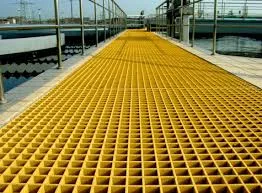
-
 Afrikaans
Afrikaans -
 Albanian
Albanian -
 Amharic
Amharic -
 Arabic
Arabic -
 Armenian
Armenian -
 Azerbaijani
Azerbaijani -
 Basque
Basque -
 Belarusian
Belarusian -
 Bengali
Bengali -
 Bosnian
Bosnian -
 Bulgarian
Bulgarian -
 Catalan
Catalan -
 Cebuano
Cebuano -
 China
China -
 China (Taiwan)
China (Taiwan) -
 Corsican
Corsican -
 Croatian
Croatian -
 Czech
Czech -
 Danish
Danish -
 Dutch
Dutch -
 English
English -
 Esperanto
Esperanto -
 Estonian
Estonian -
 Finnish
Finnish -
 French
French -
 Frisian
Frisian -
 Galician
Galician -
 Georgian
Georgian -
 German
German -
 Greek
Greek -
 Gujarati
Gujarati -
 Haitian Creole
Haitian Creole -
 hausa
hausa -
 hawaiian
hawaiian -
 Hebrew
Hebrew -
 Hindi
Hindi -
 Miao
Miao -
 Hungarian
Hungarian -
 Icelandic
Icelandic -
 igbo
igbo -
 Indonesian
Indonesian -
 irish
irish -
 Italian
Italian -
 Japanese
Japanese -
 Javanese
Javanese -
 Kannada
Kannada -
 kazakh
kazakh -
 Khmer
Khmer -
 Rwandese
Rwandese -
 Korean
Korean -
 Kurdish
Kurdish -
 Kyrgyz
Kyrgyz -
 Lao
Lao -
 Latin
Latin -
 Latvian
Latvian -
 Lithuanian
Lithuanian -
 Luxembourgish
Luxembourgish -
 Macedonian
Macedonian -
 Malgashi
Malgashi -
 Malay
Malay -
 Malayalam
Malayalam -
 Maltese
Maltese -
 Maori
Maori -
 Marathi
Marathi -
 Mongolian
Mongolian -
 Myanmar
Myanmar -
 Nepali
Nepali -
 Norwegian
Norwegian -
 Norwegian
Norwegian -
 Occitan
Occitan -
 Pashto
Pashto -
 Persian
Persian -
 Polish
Polish -
 Portuguese
Portuguese -
 Punjabi
Punjabi -
 Romanian
Romanian -
 Russian
Russian -
 Samoan
Samoan -
 Scottish Gaelic
Scottish Gaelic -
 Serbian
Serbian -
 Sesotho
Sesotho -
 Shona
Shona -
 Sindhi
Sindhi -
 Sinhala
Sinhala -
 Slovak
Slovak -
 Slovenian
Slovenian -
 Somali
Somali -
 Spanish
Spanish -
 Sundanese
Sundanese -
 Swahili
Swahili -
 Swedish
Swedish -
 Tagalog
Tagalog -
 Tajik
Tajik -
 Tamil
Tamil -
 Tatar
Tatar -
 Telugu
Telugu -
 Thai
Thai -
 Turkish
Turkish -
 Turkmen
Turkmen -
 Ukrainian
Ukrainian -
 Urdu
Urdu -
 Uighur
Uighur -
 Uzbek
Uzbek -
 Vietnamese
Vietnamese -
 Welsh
Welsh -
 Bantu
Bantu -
 Yiddish
Yiddish -
 Yoruba
Yoruba -
 Zulu
Zulu
Innovative GRP Pipe Systems for Efficient Water Management Solutions
Understanding GRP Piping Systems An Overview
Glass Reinforced Plastic (GRP) piping systems have emerged as one of the most reliable and efficient solutions for various industries, ranging from water treatment to chemical processing. These modern piping systems integrate the robust properties of glass fibers with the versatility of plastics, offering a range of benefits that traditional materials such as metal or PVC simply cannot match.
Composition and Properties
GRP piping systems are composed of a thermosetting polymer resin reinforced with glass fibers. This unique combination results in a material that not only displays exceptional strength but also possesses excellent resistance to corrosion, chemicals, and extreme temperatures. The lightweight nature of GRP pipes simplifies installation and transportation, allowing for significant labor and cost savings for project managers and contractors.
Applications
The versatility of GRP piping systems makes them suitable for a wide array of applications. In the water and wastewater industry, GRP pipes are extensively used due to their resistance to harsh chemicals and environmental factors. They are ideal for transporting treated and untreated water, sewage, and even industrial effluents. In the oil and gas sector, GRP pipes are increasingly favored for their ability to withstand corrosive substances without the risk of degradation, thus ensuring operational efficiency and safety.
Beyond fluids, GRP systems are also gaining traction in the building and construction fields. They make excellent drainage solutions, encapsulating stormwater and preventing flooding in urban areas. Furthermore, GRP's durability means that these systems require less maintenance compared to traditional materials, contributing to lower long-term operational costs.
Advantages Over Traditional Materials
grp piping system

When compared to traditional piping materials, GRP systems exhibit several advantages. Firstly, their lightweight nature facilitates easier handling and installation. This is particularly beneficial in projects where labor costs are a significant factor. Secondly, GRP pipes are less prone to scale buildup, which is essential for maintaining flow efficiency over time.
Corrosion resistance is another major benefit. While metal pipes are susceptible to rust and degradation, GRP systems can withstand exposure to a variety of chemicals without deteriorating, thus extending the life of the infrastructure. Additionally, GRP pipes are non-conductive, reducing the risk of electric shock and making them a safer choice for certain installations.
Challenges and Considerations
Despite their numerous benefits, GRP piping systems do come with certain challenges. The initial cost of procurement may be higher than that of conventional materials, though this is often offset by long-term savings in maintenance and operational efficiency. Proper installation is also essential, as any mistakes can lead to costly repairs and replacements.
Furthermore, the environmental impact of GRP manufacturing processes must be considered, as with any synthetic material. Sustainable practices and advancements in recycling technology are critical to minimizing potential negative impacts on the environment.
Conclusion
In conclusion, GRP piping systems represent a forward-thinking solution to many of the challenges faced in modern piping applications. As industries continue to demand more durable, efficient, and cost-effective solutions, GRP piping is poised to play an essential role in infrastructure development worldwide. With ongoing advancements in manufacturing and installation techniques, the future looks bright for GRP technology, making it a favorable choice for projects seeking reliable and innovative piping systems.









